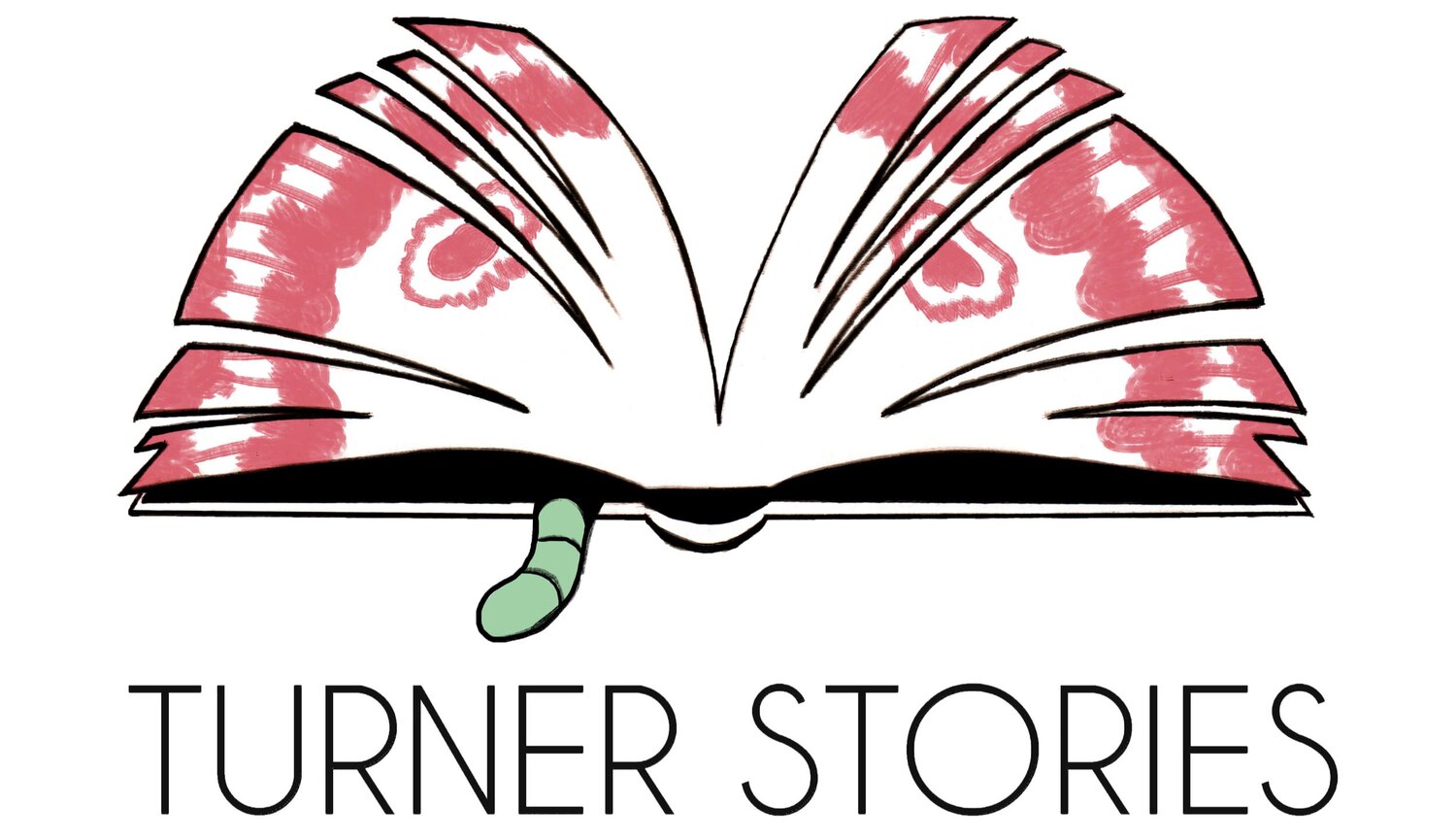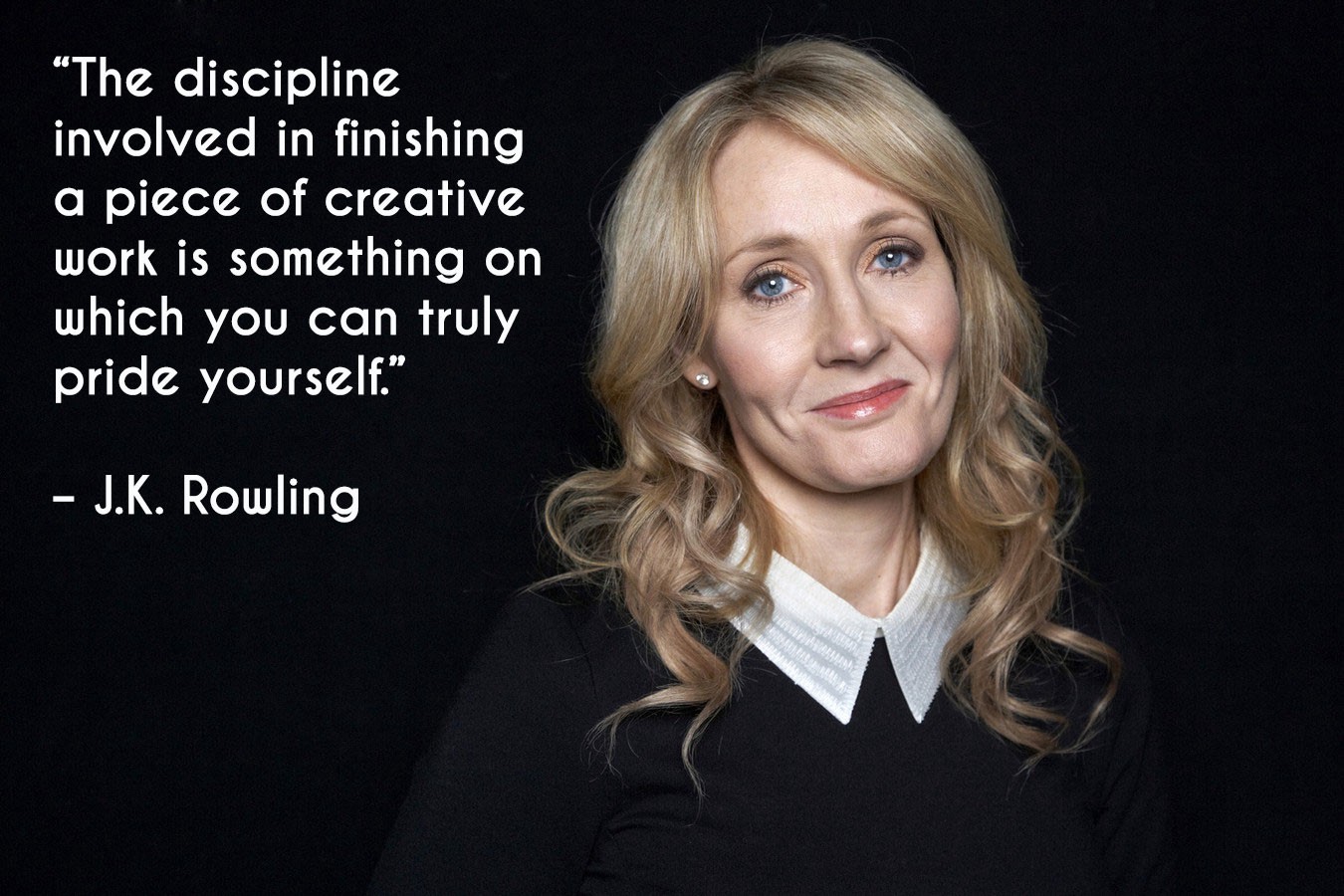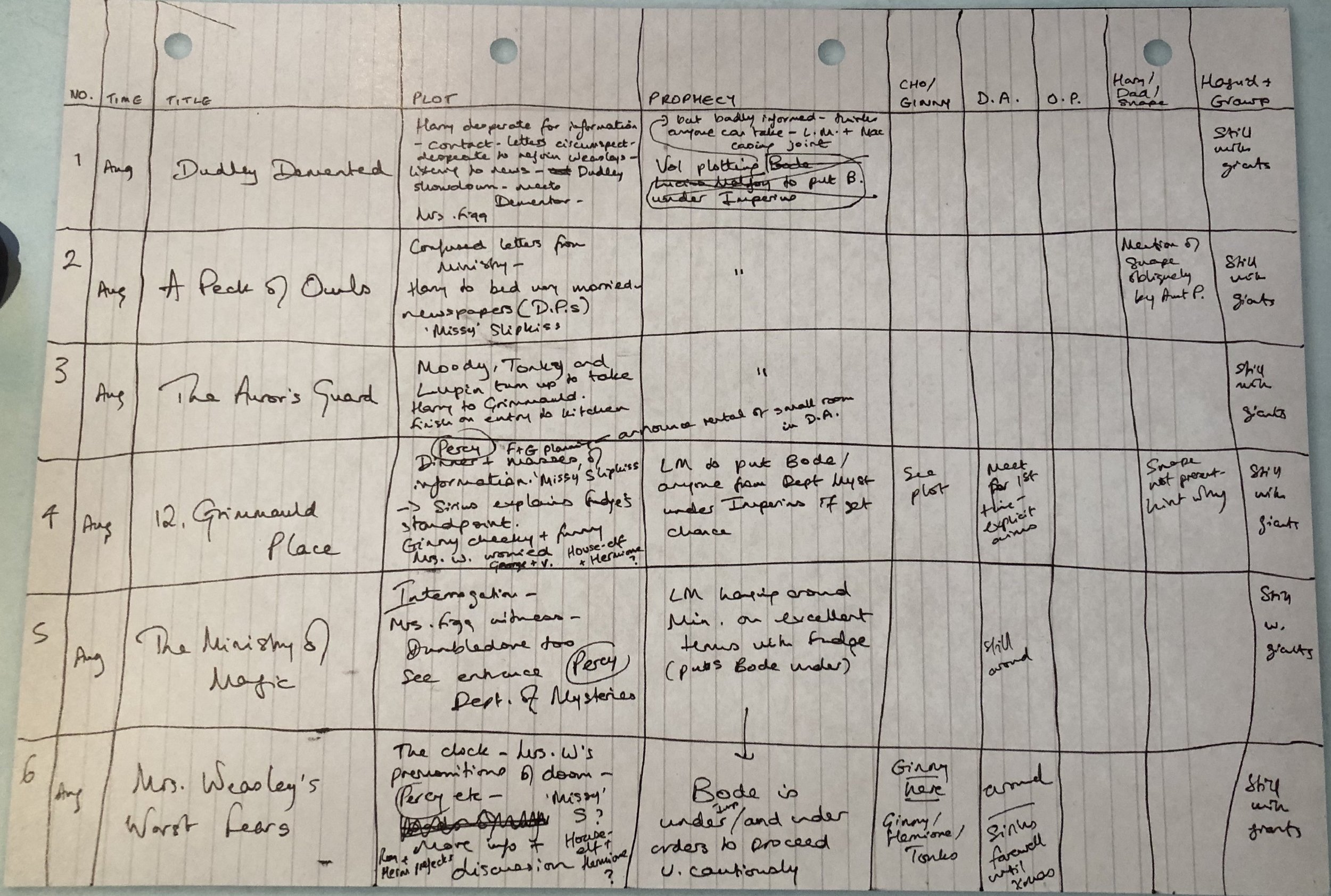8 Lessons on Writing by J.K. Rowling
J.K. Rowling’s Writing Tips and Tricks Collected
© Reuters
I would love to read a book by J.K. Rowling about her writing process, just like Stephen King’s ‘On Writing’. So, Joanne, if you’re reading this, this would make a great Christmas present. Even an article would be fine 😉.
Last Christmas, I read the book “Harry Potter: A Journey Through a History of Magic” and it was packed with insights about J.K. Rowling’s writing habits. I was mesmerized. Discovering these habits I thought to myself: ‘I need to re-read Harry Potter and pay attention to her writing.’
During the winter of 2018, from January to March, I re-read the whole series. I had my notes app within reach along with a digital dictionary.
I’m not a native speaker, but I prefer to write in English for several reasons. Therefore it’s only right I keep on studying the language to hone my craft. I learned many new words and expressions. But that’s not all.
I studied the pace of the books, the dialogue, the way characters are being brought to life — characters who’ve become household names.
Lastly, I’ve googled writing advice by J.K. Rowling and found wisdom in her Harvard commencement speech. Sometimes she shares some gems of writing tips on Twitter.
Needless to say, she’s a huge inspiration to me. My pen name ‘N.A. Turner’ is a small homage to her.
So, here are the most important lessons on writing I learned from J.K. Rowling.
1. Use Your Own Voice
“Write what you know: your own interests, feelings, beliefs, friends, family and even pets will be your raw materials when you start writing.” — J.K. Rowling
This is solid advice. Be yourself, don’t try to imitate another writer. Draw from your own experiences. No matter how old you are, you’ve got some baggage. Don’t take someone else’s luggage.
Write about subjects you find intriguing. For my short stories, I often end up examining alternative (dystopian) futures, human virtues and vices, economic subjects like a basic income, climate change, etc.
As I said, I’m not a native speaker and I don’t intend on using words I have never used before. Keep it simple.
I often use the situations I experienced with friends or family in my writing. I steal brilliant quotes from friends and assign them to a character. I tap into my own emotions and feelings to humanize my characters (like anxiety, insecurities, identity, sexuality). I use things that happened to me in past that shaped me into who I am today. I use things that happened to my friends. The list is endless. Use what you know.
Bring your own (authentic) humor to the table. I often laughed out loud reading the Harry Potter books. Rowling can be so authentically funny in ways I personally haven’t been able to do myself. She hits you with a joke when you least expect it. Or she crafts a situation where one of her characters are put on the spot (Gilderoy Lockhart anyone?) where you just can’t take the character seriously. Play.
I tend to have very dry humor, so naturally, some of my characters have the same trait.
One more thing on this subject, read a lot. Figure out what you like. Study the greats. Again: don’t copy them, but learn from them.
“I always advise children who ask me for tips on being a writer to read as much as they possibly can. Jane Austen gave a young friend the same advice, so I’m in good company there.” — J.K. Rowling
2. Make Time to Write and be Ruthless About it
Rowling: “Be ruthless about protecting writing days, i.e., do not cave in to endless requests to have “essential” and “long overdue” meetings on those days. The funny thing is that, although writing has been my actual job for several years now, I still seem to have to fight for time in which to do it. Some people do not seem to grasp that I still have to sit down in peace and write the books, apparently believing that they pop up like mushrooms without my connivance. I must therefore guard the time allotted to writing as a Hungarian Horntail guards its firstborn egg.”
“Sometimes you have to get your writing done in spare moments here and there.”
If you’re serious about writing, you have to seriously make time for it. This comes at a cost, but it must be a price you’re willing to pay. I dedicated a whole article to this:
Like Rowling, you need to defend this writing time or be creative about it.
I cut down on the number of TV shows I was watching. I combine social dinners with multiple friends.
I try to get up half an hour earlier every day and I start writing first thing in the morning. Luckily, I can afford to work four days a week. Fridays are for writing, editing, research and learning.
Where some people play an instrument or sports on the weekend, I write.
Carve out time for your craft, schedule it if you have to and then protect it.
Develop a writing habit and routine.
“You’ve got to work. It’s about structure. It’s about discipline. It’s all these deadly things that your school teacher told you you needed… You need it.” — J.K. Rowling
3. Structure Your Writing (Map Out Your Novel)
“Yes, I plan a lot and usually in table form. In the case of the present novel, I had the idea for the plot in 2013, but its undergone huge revisions since then.” — J.K. Rowling
Rowling is known for being a thorough planner. When I read “Harry Potter: A Journey Through a History of Magic”, a whole new world opened up to me. In the book, one of her tables is shared for “The Order of the Phoenix”.
From the book “Harry Potter: A Journey Through a History of Magic”, ©Bloomsbury.
The planner in me jumped from joy. This is what I needed for my novel too! Simple and elegant. I keep referring back to it in order to keep up with the plot points of my story.
You can even go one step further and turn this into a color-coded Excel sheet!
Another interesting thing about J.K. Rowling’s writing habit is that she prefers to write in longhand first and then types up her story afterward.
This sounds so romantic, but I’ve found it’s not for me. I like the fact that I can edit as I write. To move words around, copy, paste or delete.
I use Scrivener to write my novel. It’s a great tool to organize the mess in my head. Ideas, chapters, characters, places, research and everything else are structurally organized in one document. Bye bye Word. (To be fair: I still use Word for blog posts and short stories).
The only time I manually write is when I write down ideas, but I must say I prefer to use digital apps for this too.
4. On the Use of Adverbs
Now I’m putting myself in dangerous territory. Adverbs. Love them or hate them.
I wrote an article about the writing lessons I learned from Stephen King. In his book ‘On Writing’, he’s quite outspoken:
“The adverb is not your friend. Adverbs … are words that modify verbs, adjectives, or other adverbs. They’re the ones that usually end in -ly. Adverbs, like the passive voice, seem to have been created with the timid writer in mind. … With adverbs, the writer usually tells us he or she is afraid he/she isn’t expressing himself/herself clearly, that he or she is not getting the point or the picture across.
I can be a good sport about adverbs, though. Yes I can. With one exception: dialogue attribution. I insist that you use the adverb in dialogue attribution only in the rarest and most special of occasions . . . and not even then, if you can avoid it.”
Contrary to Stephen King’s view, J.K. Rowling does use adverbs quite often in her dialogue. Does that make her a timid writer? I don’t think so. For one thing, I think her use of adverbs are one of the reasons her characters are so distinctive. The adverbs she uses in dialogue say a lot about her characters and their emotions.
However, I agree with King here too. What I try to do is use the best of both worlds. If the reader can pick up from the dialogue what emotional state my characters are in, I don’t use adverbs.
To stress some aspects of a conversation, I sometimes put them in.
I believe it’s a matter of taste as well. To each his/her own.
You can also try to find alternative words for ‘said’ to indicate how someone expresses herself, here’s a good article about it filled with alternatives.
5. Give Your Characters Distinctive Traits
This may sound obvious, but when you think about it, how many characters from other books can you describe as thoroughly as the characters in the Harry Potter books? Like, really?
J.K. Rowling is truly a sorceress when it comes to conjuring up lively characters. Ron Weasley’s wit, hair, sulking, and second-hand clothes. Hermione’s cleverness, nerdiness, and righteousness. Dumbledore oozes ‘wise’ from his spectacles to his cloak and his worldly observations. Hagrid’s way of speech, clumsiness, and complete inability to keep a secret. Snape’s gloom, grudge, and billowing cloak.
From the way they look, to how they speak, move, and look at the world, characters can truly be distinctive when you give them depth. That way, they walk off the page.
Early on in my short story writing, a friend who edits my stories said to me ‘I’m sorry but this female character is too flat. Who is she? What does she stand for? What’s her take on the world?’.
Save to say I panicked, but it taught me a powerful lesson. I started modeling characters after people I knew. I mixed personality traits from one person with another. So what I try to do with building characters is this: model them after people I know and dive into their emotional world. What makes them tick and motivates them? What do they want and/or need?
6. Pay Attention to Pace
I hate it when a book loses its pace. When an author describes a scene in so much detail and I’m anxious for the story to continue. Here too it comes down to taste I guess. But endless Proustian pages of the scent of a woman’s perfume dull me right into sleep. Sure, the prose can be spectacular, but what about the story?
Again, Rowling does something truly magical in the Harry Potter series. She has created a world so vivid that we all see ourselves at Ollivander’s where a wand chooses us. Where we jinx other students or want to hit Dolores Umbridge with a knock back jinx. Or am I the only geek here?
The thing is, she paints the world vividly without losing sight of the quest, the main plot, the purpose of her story. Every scene serves a purpose. That’s what I’d like to achieve one day. To keep my readers at the edge of their seat and to keep them from sleeping. Yup, you read that right.
When I first read the Harry Potter books, they literally kept me from sleeping desperate as I was to find out what happened.
7. Draw Your Characters and Inventions
When I was reading “Harry Potter: A Journey Through a History of Magic”, I learned that J.K. Rowling made wonderful drawings of her characters. Of course, she’s good at that too!
I mean, look at some examples here:
From the book “Harry Potter: A Journey Through a History of Magic”, ©Bloomsbury. Drawn by J.K. Rowling.
Now to say I’m good at drawing? No. But I have tried to depict some of the characters in my novel too. It’s fun! And they’ve become more real to me. Perhaps that why she did it too. (Update: in the A.I. age you can have ChatGPT or Midjourney do the work for you!).
Besides drawing characters, I turn to a sketchbook for some of my other literary inventions too. Scenes, settings, objects, drawing is a great way to further examine your creations.
I’ve heard from other authors who used pictures of celebrities to base the features of their characters on. That’s an interesting idea as well and I must admit sometimes an image of someone famous pops up when I’m writing.
8. Don’t Give Up
Rowling: “I had nothing to lose and sometimes that makes you brave enough to try.”
“I wasn’t going to give up until every single publisher turned me down, but I often feared that would happen.”
J.K. Rowling did send her manuscript to different publishing houses. She endured many rejections until Bloomsbury finally accepted her first installment in the Harry Potter series. We all know her rags to riches story.
There’s this great line said by Dumbledore: “Happiness can be found, even in the darkest of times, if one only remembers to turn on the light.” I can only imagine that that was how she felt while she was writing.
Under the pseudonym of Robert Galbraith, she tried to get published again from scratch. She didn’t need to, but she wanted to. Again she got rejected. She even pinned the first rejection letter to the wall as a reminder to herself.
But before you can send out your manuscript, you need to finish it. No matter the outcome. Finish it for you. Develop that skill of making it to the end. Write because you want to or even have to. There’s nothing as sad as a story left unfinished.
Rowling: “The discipline involved in finishing a piece of creative work is something on which you can truly pride yourself.”
“Perseverance is absolutely essential, not just to produce all those words, but to survive rejection and criticism.”
The only way to finish a writing project (or any other thing really), it to keep consistently doing it.
Conclusion
I enjoyed learning from one of the greatest storytellers of the last two decades.
One of the most striking things about her writing is the amount of joy one can find in her work. She must have loved her writing process from her first drafts to final revisions.
Some last habits and tricks I came across where the fact that she writes in her garden house — she needs an inspiring environment. At this moment I’m writing this lying on my couch with my laptop on my lap. I don’t have such a sanctuary yet.
Another striking thing about J.K. Rowling is the way she interacts with her readers. She’s always positive and encouraging (except when you are negative, then she can duel you to the death).
I hope you’ve picked up on something useful. I know I have.
Update 8/1/2019: Looks like J.K. Rowling has written a piece about her thoughts on writing!
Join my email list to keep in touch.
Please note: this post contains affiliate links.




